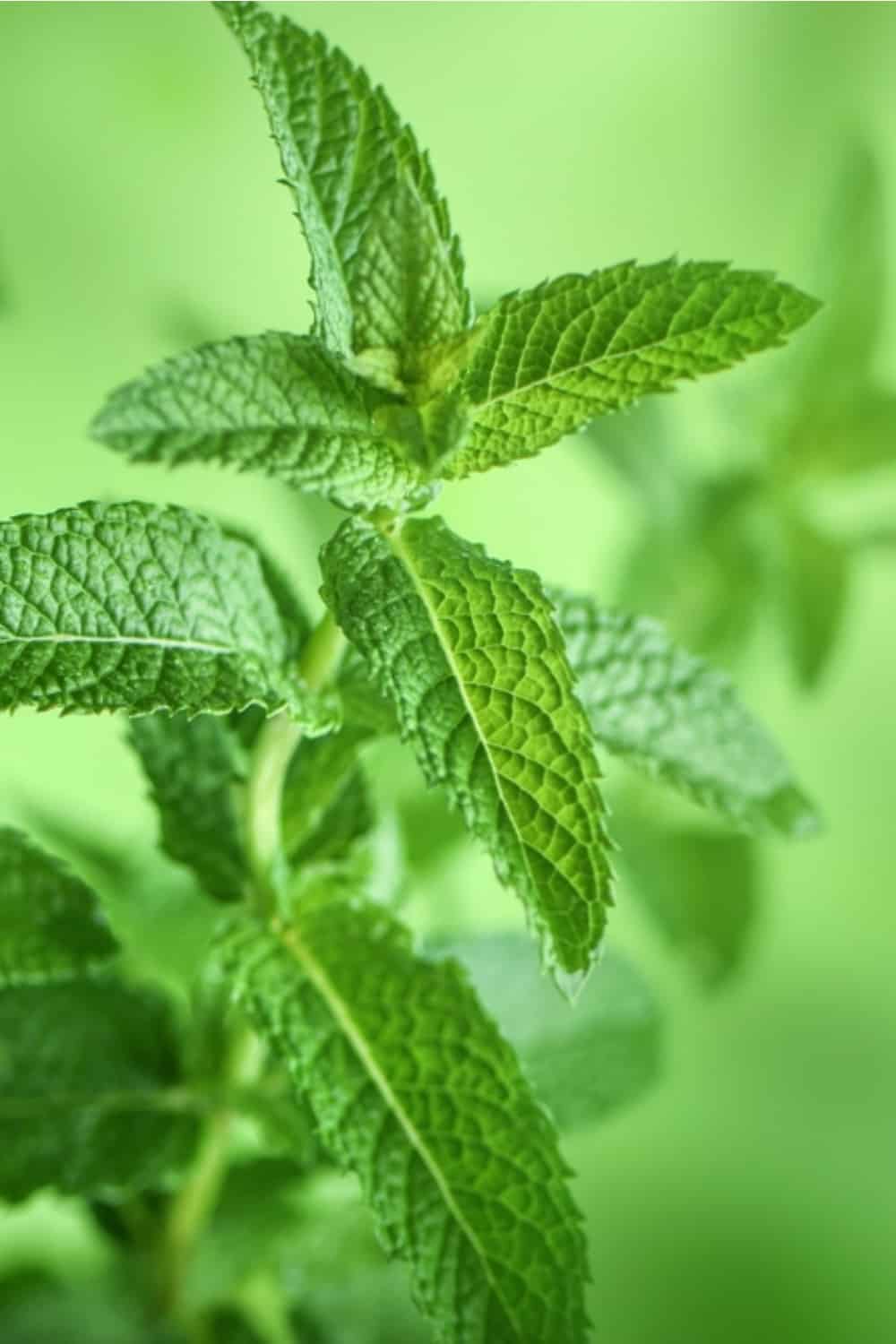If I had to describe mint in two words, it would be fresh & fragrant! This leafy green herb has a special place in my kitchen. (Everyone who knows me knows that.)
Even though I try really hard to have enough mint stash for my cooking endeavors, there are times when I run out of it. When that happens, I’m forced to find the best mint substitute because going to the store in the middle of cooking is not an option (at least, not for me).
I always keep in mind that dried mint has a more intense flavor than fresh mint, so you can choose whether you’ll use the substitutes in their fresh or dried form for enhanced flavor.
I divided these substitutes into two sections. The first one comprises mint-based substitutes which are my first choices. The second section is other mint substitutes which are also great alternatives if you lack the ones listed in the first section.
NOTE: To help you narrow down your choices, I’ve compared each mint-based substitute to mint in terms of their similarities and differences.
Mint-Based Substitutes For Mint

From herbal mint tea to spearmint, here are the best mint substitutes out there:
1. Herbal mint tea
Herbal mint tea is my best friend during cold winters, and also when I run out of mint when cooking.
Similarities
• Flavor: Herbal mint tea and mint (fresh or dried) share the same minty flavor with sweet undertones.
• Texture: Both herbal mint tea and dried mint have a dry texture.
• Menthol percentage: Herbal mint tea and mint (fresh or dried) contain more than 30% menthol.
• Availability: Herbal mint tea and mint in fresh or dried form are widely available in grocery stores, supermarkets, and online shopping websites.
Differences
• Price: 1 oz of herbal mint tea costs around $3. The average price of dried mint is $10 per 1 oz, while fresh mint costs around $3 per 1 oz
How to use herbal mint tea
You can prepare herbal mint tea as usual and add it to your dish to get that minty flavor. Or you can add the dried mint from the tea bags to your dish.
Substitute ratio: There’s no recommended amount of adding herbal mint tea, so feel free to experiment with it. If you’re going to use the dried mint content from the tea bags, keep in mind that 1 tablespoon of fresh mint equals 1 teaspoon of dried mint.
2. Peppermint extract
This popular food that starts with P is basically a combination of spearmint and water mint. Now, peppermint extract is a combination of alcohol and peppermint essential oils.
Similarities
• Flavor: Both peppermint and mint have a minty flavor, but peppermint is a bit spicier.
• Availability: Peppermint extract and mint are widely available in grocery stores, supermarkets, and online shopping websites.
Differences
• Menthol percentage: Peppermint extract contains 50% to 60% menthol, while mint has around 30% menthol.
• Texture: Peppermint extract has a liquid texture, while mint comes in two versions: fresh or dried.
• Price: 1 fl oz of peppermint extract costs around $2. The average price of dried mint is $10 per 1 oz, while fresh mint costs around $3 per 1 oz
How to use peppermint extract
You can use peppermint extract for the same dishes as you would use mint. However, peppermint extract pairs best with sweet dishes. Also, it needs to be diluted with water.
Substitute ratio: Mix a few drops of peppermint extract with water, or simply add it to your dish that contains liquid. There’s no recommended substitute ratio, so feel free to experiment with it or prepare it according to the instructions on the package.
3. Spearmint flavor extract
Spearmint flavor extract is a natural or artificial version of spearmint.
Similarities
• Flavor: Both spearmint flavor extract and mint have a minty flavor, but spearmint is a bit sweeter than mint because it contains a compound known as carvone.
• Availability: Spearmint flavor extract and mint are widely available in grocery stores, supermarkets, and online shopping websites.
Differences
• Menthol percentage: Spearmint contains only 0.5% menthol, while mint contains more than 30% menthol.
• Texture: Spearmint flavor extract has a liquid texture, while mint comes in two versions: fresh or dried.
• Price: 1 oz of spearmint flavor extract costs around $7. The average price of dried mint is $10 per 1 oz, while fresh mint costs around $3 per 1 oz
How to use spearmint
Use spearmint flavor extract with baked goods, ice creams, and any other main dishes or desserts.
Substitute ratio: Add a small amount of spearmint flavor extract to your dishes. Prepare it according to the instructions provided on the package.
Other Mint Substitutes

If you don’t have mint tea, peppermint tea, peppermint extract, or spearmint at hand, or there aren’t any in stores, below is the list of other great alternatives you should consider:
1. Basil
Basil will add that peppery aroma with a hint of sweetness to your dishes. That’s why it’s considered one of the best substitutes for mint.
Best for: Basil leaves are popularly used with pasta, pizza, sauces, soups, and salads. You can use basil even as an ice cream topping. Yummy!
Substitute ratio: Use a bit more basil than you would use mint in order to achieve the same flavor intensity.
2. Rosemary
Rosemary belongs to the mint family known as Lamiaceae. It has a rich flavor that works perfectly as a substitute for mint.
Best for: You can use rosemary in salads, soups, stews, poultry, casseroles, lamb, pork, and fish. It also pairs well with potatoes, mushrooms, and spinach.
Substitute ratio: Use rosemary in equal amounts as you would use mint.
3. Pennyroyal
Pennyroyal has a flavor similar to spearmint. So, if you don’t have any spearmint flavor extract at hand, pennyroyal plant leaves are a great substitute.
Best for: You can use pennyroyal with soups, stews, cakes, and many other dishes that call for mint.
Substitute ratio: Use pennyroyal in equal amounts as you would use mint.
4. Sage
Sage has a strong, musky taste with minty notes.
Best for: If you need to season sausages, soups, or poultry, then sage is the best choice! I’ve also noticed that it pairs well with sweet potatoes. Have I mentioned that it’s great for stuffing, too?
Substitute ratio: Use sage in equal amounts as you would use mint.
5. Parsley
Parsley will not give you that minty flavor, but it will enrich your dish with freshness and greenery.
Best for: You can use parsley for stews, soups, pasta, roasted potatoes, quinoa, all kinds of salads, you name it.
Substitute ratio: Use more parsley than you would use mint in your dishes.
6. Coriander
Also known as cilantro, coriander has a mildly sweet, citrusy taste that has the power to enhance the flavors of other ingredients. You can also dry cilantro in order to enhance its flavor.
Best for: Coriander pairs well with curries, sauces, shrimp, bacon, steak, lamb, soups, carrots, chicken, chickpeas, etc.
Substitute ratio: Use more coriander than you would use mint in your dishes.
7. Tarragon
Tarragon has a licorice flavor of mild intensity.
Best for: Tarragon is best used with savory dishes and salads.
Substitute ratio: Use less tarragon than you would use mint.
8. Oregano
Oregano belongs to the mint family Lamiaceae, and it has a peppery, minty flavor. It is one of the best substitutes for rosemary as well.
Best for: Oregano is most commonly used in pasta sauce and pizza. It can also be used with beans, chicken, seafood, or pesto.
Substitute ratio: Use equal amounts of oregano as you would use mint.
9. Lemon balm
The lemon balm belongs to the mint family and it has a mild, lemon flavor. Here’s how lemon balm compares to mint.
Best for: You can add lemon balm to any dish that calls for mint (be it stews or sweets).
Substitute ratio: Use equal amounts of lemon balm as you would use mint.
10. Arugula
Arugula has a peppery flavor with earthy undertones. Therefore, it is an excellent substitute for mint. Arugula is also a great alternative to radicchio.
Best for: Arugula is best used for all kinds of salads and savory dishes.
Substitute ratio: Use equal amounts of arugula as you would use mint.
What Is Your Favorite Mint Substitute?
Peppermint tea leaves and basil are my favorite alternatives when I run out of mint. From time to time, I like to add other flavors as well such as rosemary, basil, and oregano.
I’m also determined in encouraging others to try different mint substitutes instead of sticking to only one. After all, every mint substitute on this list is a great substitute for any dish. 😄


